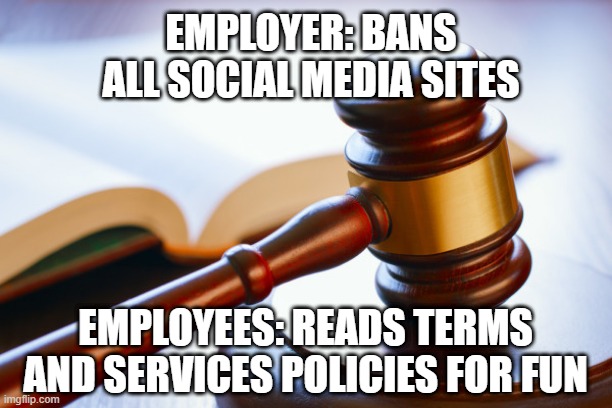From the birth of Facebook to now the many renditions of Instagram, Snapchat, TikTok and so on – social media has been integrated into our daily lives more than we ever could’ve imagined. With more than 3 billion people expected to be on social media and each person potentially spending at least 2 hours a day on them, it’s not farfetched to say we’re facing another form of a pandemic right under our noses.
As someone who works remote exclusively, I have talked about some issues pertaining to procrastination in a previous post. However, I have mostly associated the cause of it with menial distractions (conveniently leaving out social media for this moment!). Distractions from social media browsing is a whole other can of worms to dive into. It’s not much about human’s lack of will power or discipline to stop scrolling, but more of its engineered addictive nature to begin with.
Before we look into ways on combating this. We first need to look into why we constantly find ourselves glued to our tiny rectangular screens.
The Genius Behind Engaging People’s Attention

“The Feed” is no doubt a man-made engineered construction designed to get you hooked for hours on end. For each swipe to the end of the feed, it loads more content relevant to your taste. Be it cat videos, movie trailers or horrendous slapstick. They are all designed to cater on ways to keep you scrolling. The more you scroll, the smarter the algorithm gets in selectively showing curated content, and the cycle repeats itself. Some say that Facebook actually knows you better than you know yourself! An interesting, yet worrying thought to have when privacy is already as thin as ice nowadays.
As an engineer who’ve worked on community platforms (think of Reddit, but more niche), the feed is a powerful tool that keeps users coming back and continue engaging with other users. Unfortunately, it doesn’t discriminate between individuals who are using it for leisure, or those who are sneakily using it as work distraction. It affects everyone, with some having more detrimental effects on their well-being. For remote or Work From Home (WFH) workers, it is potentially the greatest bane for our working arrangements.
When your phone is both a communications device and also houses all your favorite social media apps, it can be excruciatingly difficult to separate from it. I often find myself constantly checking my feed for 10 minutes for every text message I get from my WhatsApp. After a while, 10 minutes becomes 20 minutes, then to 30 minutes, and then I had to stop when there’re no newer updates. In the end, I returned to work more anxious than ever – it doesn’t take a neuroscientist to know those are early telltale signs of addiction.
So What’s My Verdict?
To answer the title, I do personally believe that social media browsing is an absolute menace to productivity as a remote employee. Unless your job specifically deals with managing social media related activities, I simply could not find a suitable justification to excessively indulge in mindless scrolling. Allow me to summarize some excuses I’ve heard (and made) over the years and how to debunk them.
- It’s a way to relax after a tiring session at work. Only if used in moderation and does not pass the 10 minutes mark for every 3 hours work done. A mental break is only good when you’re doing it as a form of pass time rather than consuming time.
- I need it to keep up with the latest updates! When I was travelling in China back in 2019 (pre-COVID days!), getting a network connection is difficult thanks to the great firewall. The only times when I’m able to check on my Instagram is at the hotel just before bed time. Trust me, you’ll get through the day just fine.
- But I still wanna know what my friends are up to. People want to live interesting lives but they’re not always as glamorous as their feed depicts. Remember that the feed is man-made! Things that you see and shown are meant to keep you on for as long as possible. I don’t know about you, but I’d much prefer a relaxing chat over coffee than getting jealous over hyped-up reality.
- I couldn’t help myself. I’m just hooked. Then perhaps you’re quite right.
The first step in tackling a problem is to acknowledge that it is a problem and accept that you’ll have to work on it for a while. Ultimately, it all boils down on how to curb this bad habit that you’ve subconsciously form. Like all addiction stories, there is success to be found after hardships. I will share my own personal experience in the following section.
Breaking the habit

As every battle of breaking bad habits, it starts with small, incremental steps. Here are two very basic, simple and workable tips that you can do right now to minimize (unproductive) screen time.
Disclaimer: All points I’ll be making in the following section pertains to my own experience. These are solutions curated to solve the difficult experiences I’ve faced before. There aren’t an easy and sure-fire way of removing this habit but they are all worthwhile endeavors to pursue as baby steps.
1. Keep it away!
It’s easy to get sucked in when your phone is already there by your side. Quickest way to deal with this is to set it aside during your work sessions. Place it on the counter top, over the shelf or even outside the work space. Out of sight, out of mind as they say. The less visible your phone is, the more likely you won’t be bothered to check it.
Inform your close contacts to call only in an emergency. Anything else, you can catch up during intermittent breaks. I recommend Slack or Discord as an official medium of communication for the workplace instead of WhatsApp or Telegram. It can be built purely work oriented that helps minimize dependency on mobile phones.
And no, turning it off or putting it face down won’t be as effective! Remember you’ve got to make it a hassle for you to check your phone however you want to work that out.
2. Practice the Pomodoro technique
Traditionally, a Pomodoro is 25 minutes’ worth of work with 3-5 minutes break at the end. Perform at least 4 Pomodoros in a row and you’ll be awarded with a longer 15 minutes break instead. The essence of this technique is that it hinges on how we tend to pursue incremental tasks more efficiently as compared to tackling a large lump all at once. Doing 10 x 25 minutes work seems much more manageable than 8 hours.
To do this, you’ll need a timer of sort. It could be a watch, egg timer or a digital clock on your computer screen. Having an alarm or pop up to indicate the end of a Pomodoro will help keep you in line with how many Pomodoros you want to hit for the day. Also, there is not set-in-stone rule that you have to stop after 25 minutes, for sure keep on going if you’re on a roll! Every person has their own unique Pomodoro range that suits their workstyle best. As for myself, I find 12-14 Pomodoros per day to be the sweet spot.
Can we really be rid of it?

I would say being totally free of socials is an impossibility in this day and age. Whilst we can find ways around minimizing usage, it is still something we all collectively enjoy for our leisure activities. We are social creatures after all – technology simply magnifies that humanly need. At the end of the day, the onus is on us to be conscious of our usage and the habit formed from those actions.
To leave things off, here’s some food for thought. The average life span of a human being is 72 years of age (estimated by the WHO) in 2020. 2 hours a day adds up to at least 6 year and 8 months of your lifetime – and this is only a projection, who knows how much more the years will grow over time. To put things in perspective…
- A university degree takes an average of 4 years to complete and around the same length if you’re in a PhD program.
- You could start a career from scratch, be promoted, get into a management role, and leave for better pastures at around the 5.5-year mark as well.
Perhaps after reading this, we should all take a step back, breathe a little, have a short walk outside the garden, then pour ourselves some strong coffee before getting back to the grinding stone. Till next time, happy working everyone!

